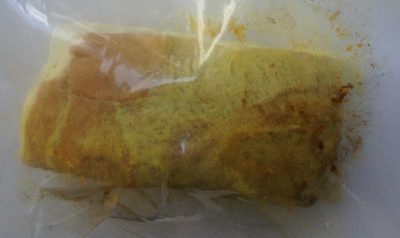Here are just some of the experiments that we did. Click here for copies of the 2015 and 2016 lab manuals.
Which soils have more spore-forming bacteria?
Soil bacteria belonging to the group Bacillus form spores that allow them to survive boiling in water. They form these resting forms to survive conditions that don’t allow them to grow, conditions like dryness or lack of nutrients. We collected samples of soils from a lawn, the edge of a paved road, and a forest. We suspended samples of these soils in water and then boiled them for 15 minutes to kill the living cells. We then spread a drop of the boiled suspension on petri plates containing an agar-containing medium that provided all the nutrients needed to grow Bacillus cells from any spores that survived the boiling. We incubated the plates in a warm incubator (37°C) overnight and observed colonies on the plates the next day. Colonies are formed when nearly a million bacteria grow from a single geminated spore. We incubated the plates for several more days and more colonies appeared as shown in the photos below. We found the most colonies on the plates containing spores from the lawn soil and the fewest on the plates of spores from the forest soil. The plates inoculated with spores from roadside soil had about as many colonies as those from forest soil.

Bacillus colonies from roadside soil (left plates), forest soil (center plates) and lawn soil (right plates)
What is the best way to disinfect a kitchen dish cloth?
Kitchen dish cloths and sponges can harbor many microbes, especially if they are continuosly damp. It is best to change these cloths frequently or disinfect them regularly so that microbes are not spread around the kitchen. We tried three different disinfection treatments on small sections of a dish cloth that had been used for several days in a real kitchen. For some treatments, dish cloth samples were soaked for 3 minutes in a 5% laundry detergent solution (5 parts detergent, 95 parts water), full strength lemon juice (which is acidic, pH 2.9), a 10% solution of household bleach (1 part bleach, 9 parts water), or room temperature tap water. One dishcloth sample was boiled in water for 3 minutes and another was placed in a microwave oven on high setting for 1 minute. One cloth sample was left untreated as a control, to see how much microbial life was on the cloth to begin with. After these treatments, each of the cloth samples was swabbed with a cotton-tipped swab and that swab was wiped over a plate of nutrient agar. The plates were incubated overnight at a warm temperature (37°C).

Nutrient agar plates after being streaked with samples from treated kithcen cloths. (left, top) boiling water treatment; (right, tip) no treatment, control; (left, center) lemon juice treatment; (right, center) laundry detergent treatment; (left, bottom) bleach treatment; (right, bottom) tap water treatment The plate at the very top that did not come out in the photo was from a cloth heated in the microwave oven. It did not have any colonies (like the one with the boiling water treatment).
We learned that boiling, microwave heating and bleach were most effective at disinfecting the cloth samples. These results are like those found in a study by the US Department of Agriculture who recommend that cloths and sponges be heated in a microwave or run through a dishwasher with the dishes to keep them disinfected between regular washings. If you microwave a cloth or sponge, it must first be dampened and the carefully removed from the oven afterwards because it will be boiling hot. Also, we used a very powerful microwave oven and found that if the cloth dried during microwaving, it began to burn, so be careful if you do this at home!
What affects the amount and kinds of molds that grow on bread?
We tested different kinds of bread for their abilities to support the growth of molds. We also added possible nutrients to see if these enhanced mold growth or caused different kinds of mold to grow. We tested three kinds of bread: white bread, whole wheat bread, and white hot dog buns. We added drops of water, lemon juice or sugar water to some as well. We placed the pieces of bread inside sealable bags to keep them moist and incubated them at room temperature for a week. To our surprise, none of the pieces of bread showed any mold growth! We continued incubating the bags for about 3 more weeks and finally molds were found on some of the bread pieces.
Here are some examples of what grew.

← white bread with water added

wheat bread with sugar water added →

← hot dog bun with water added

white bread with sugar water added →

← hot dog bun with tap water
Adding sugar water enhanced mold growth. Lemon juice prevented mold growth. Tap water allowed growth, but this growth was not as great as that with sugar water. The molds that grew with sugar water seemed different than those that grew with only water. Those that grew with sugar water were orange while those with just water were yellow. Wheat bread gave the fewest molds and the type of mold did not seem to depend so much on the type of bread, but on what nutrient was added to it.